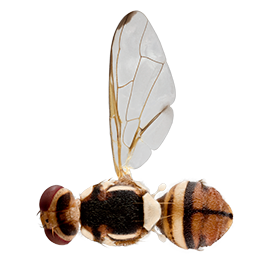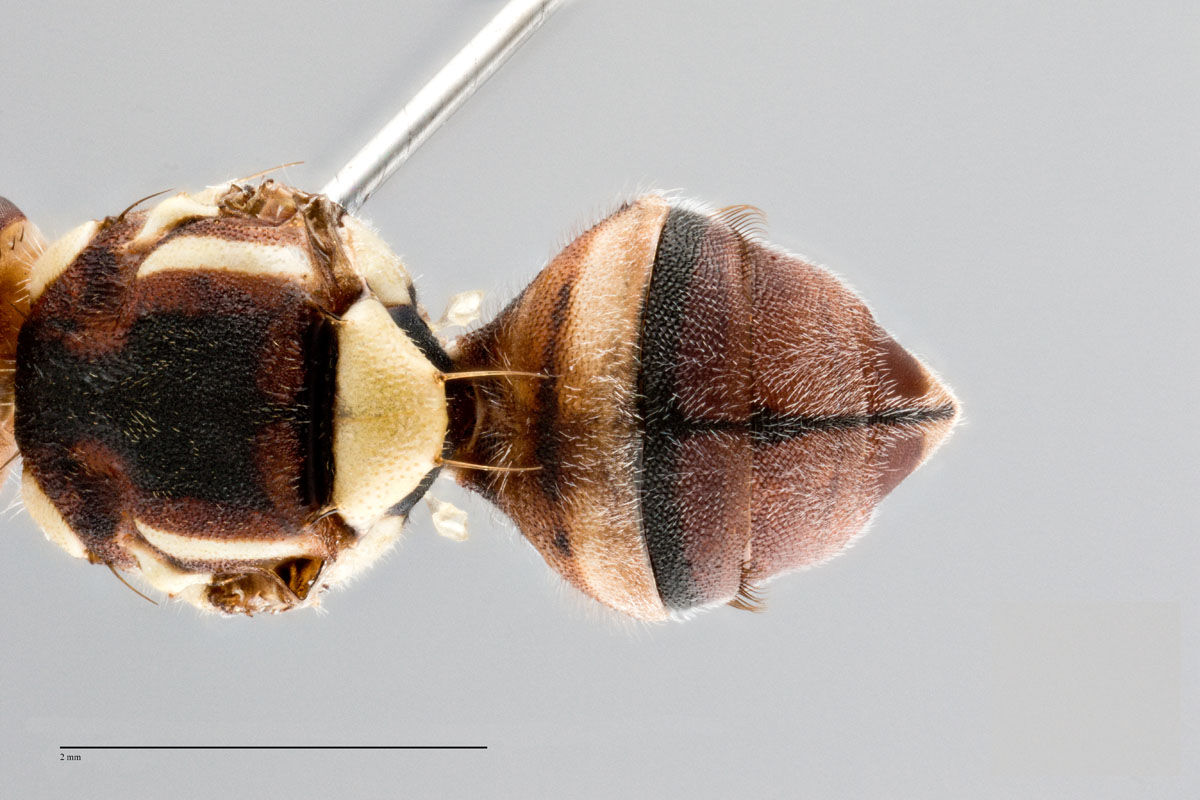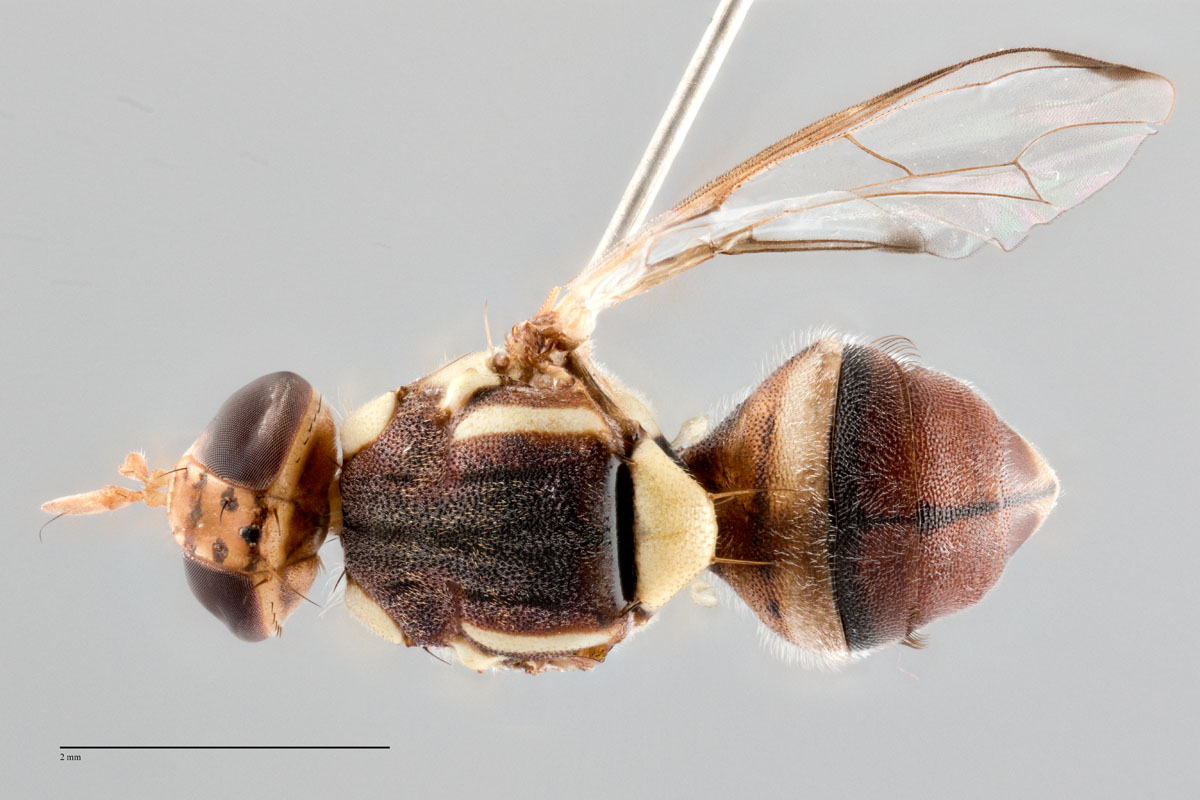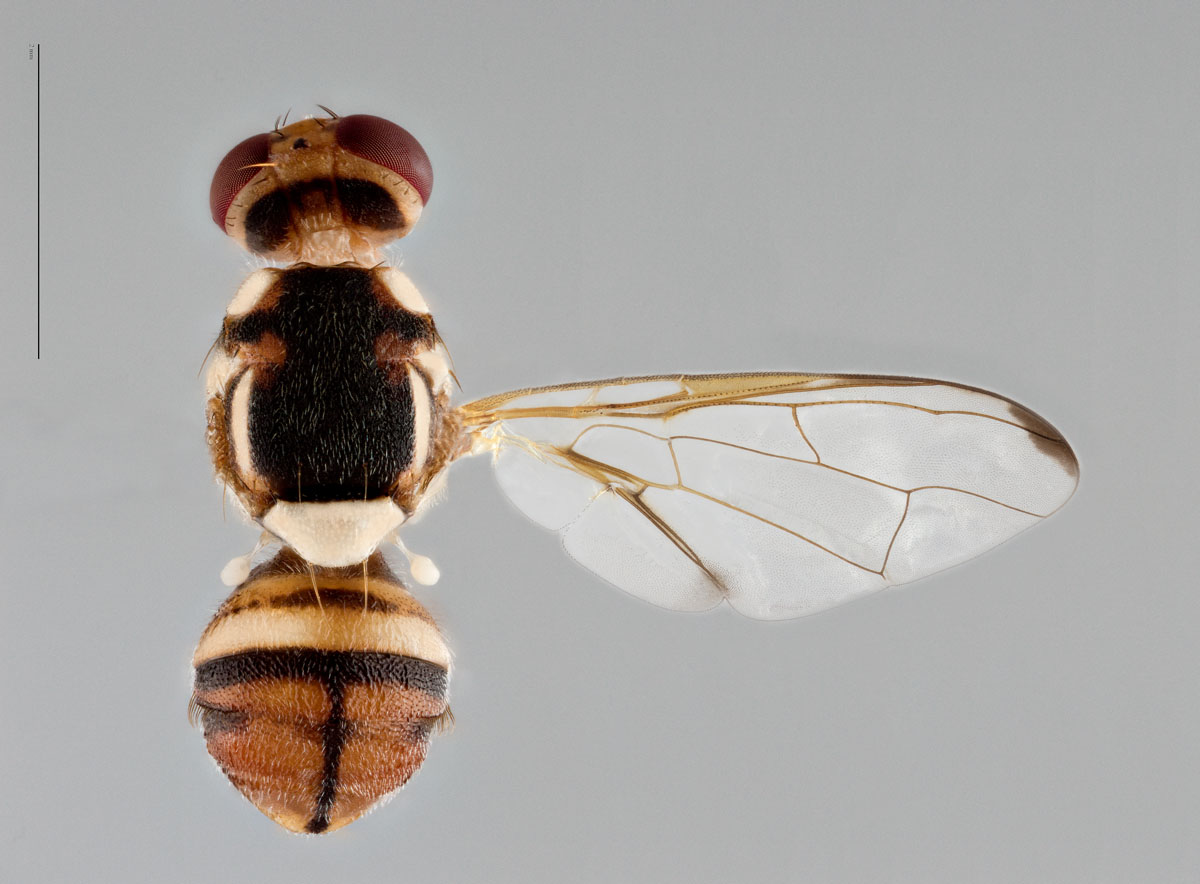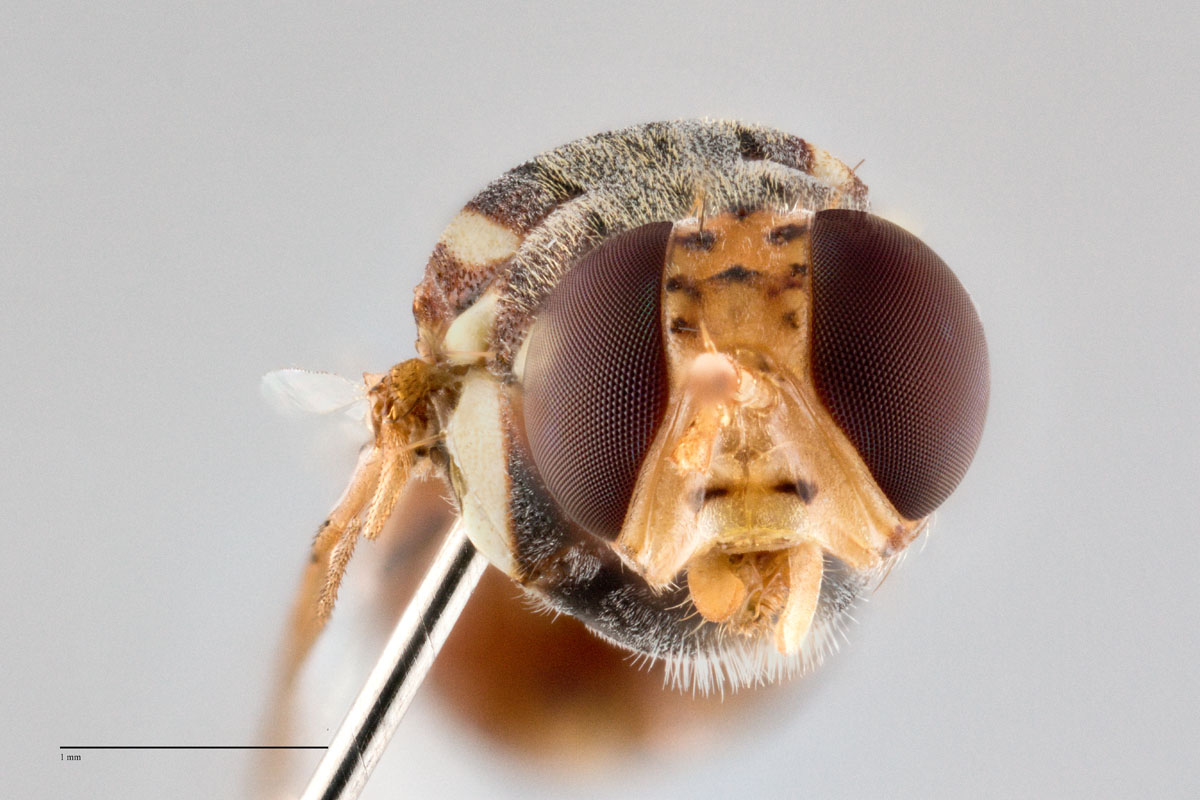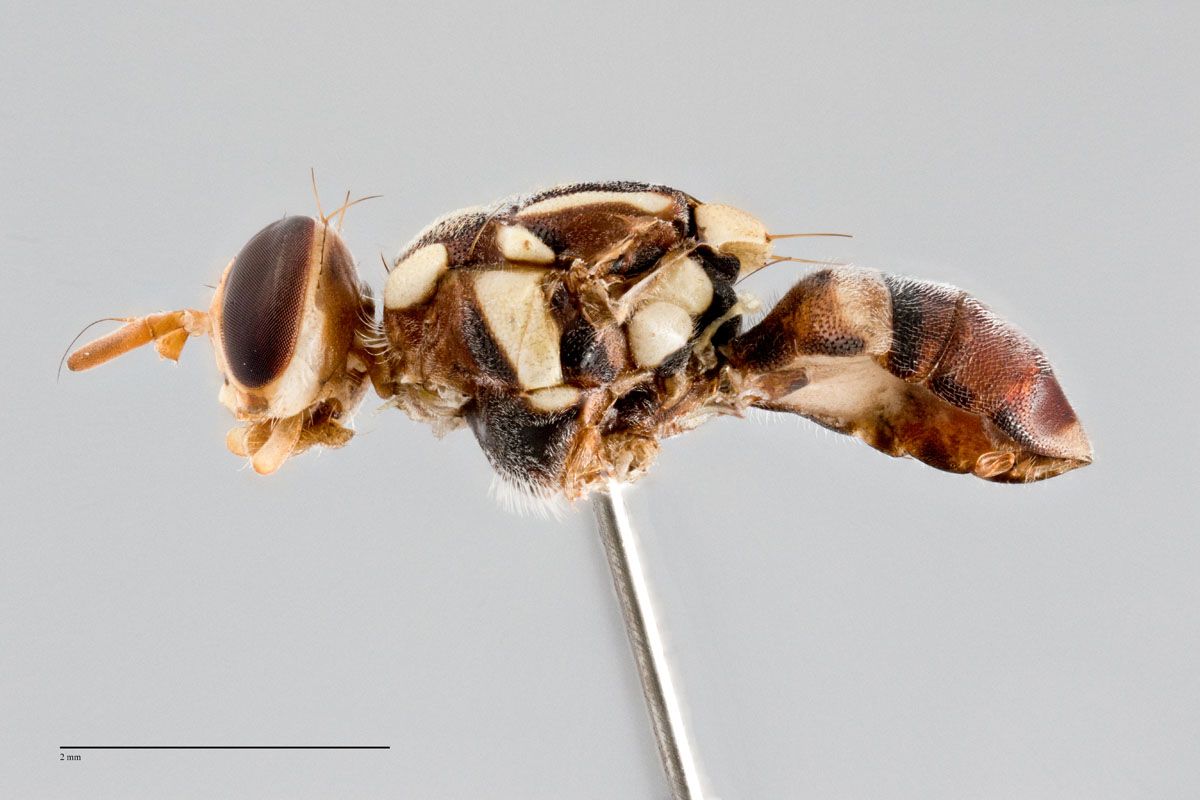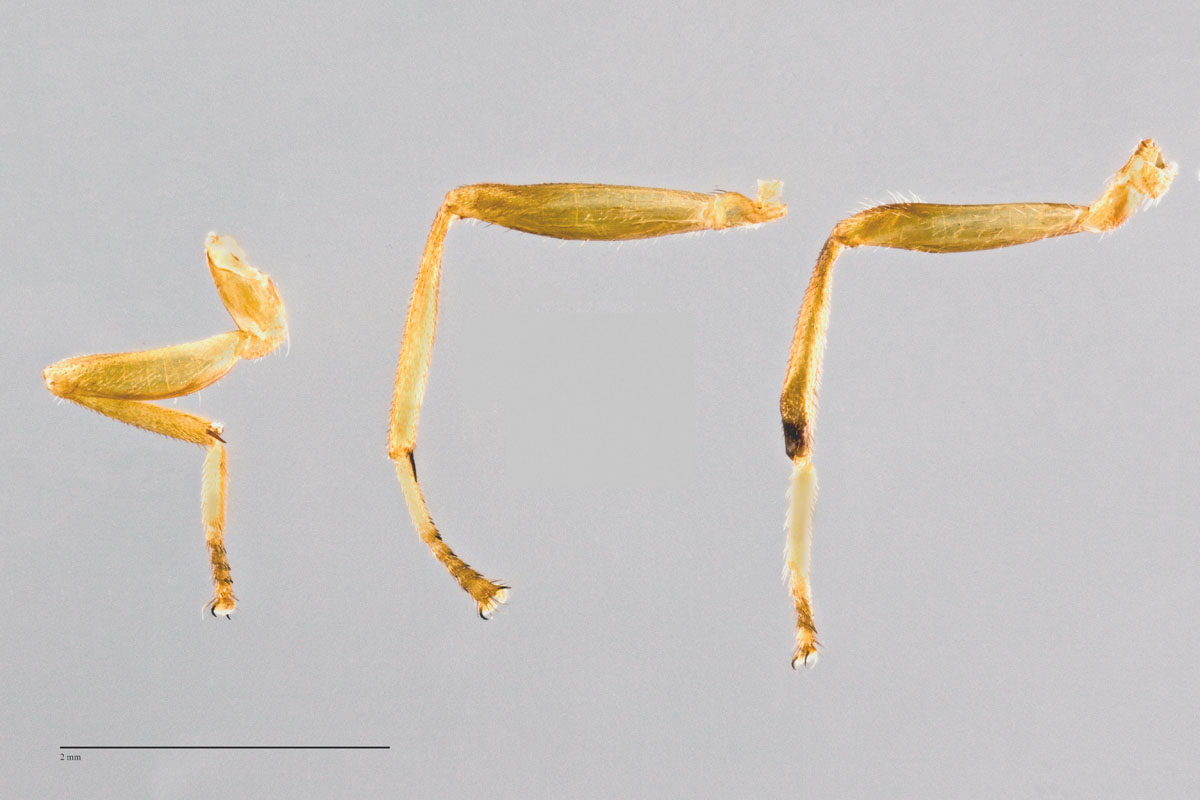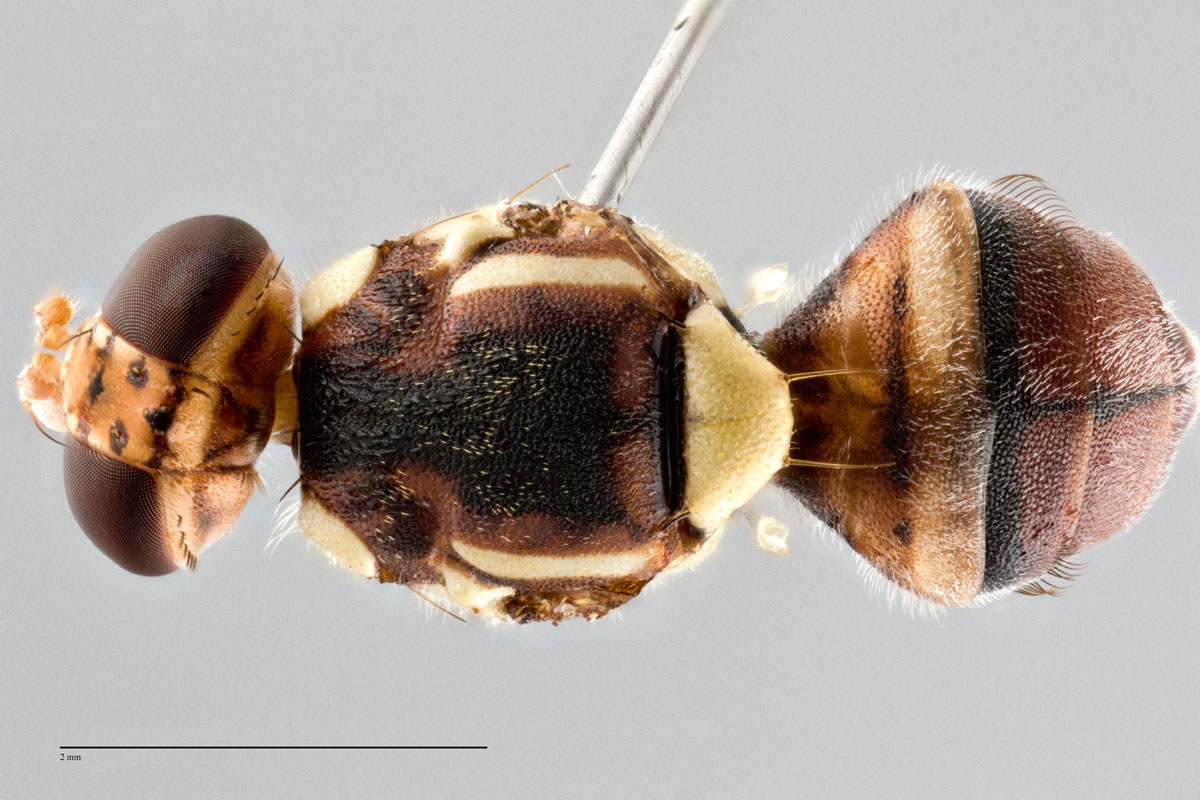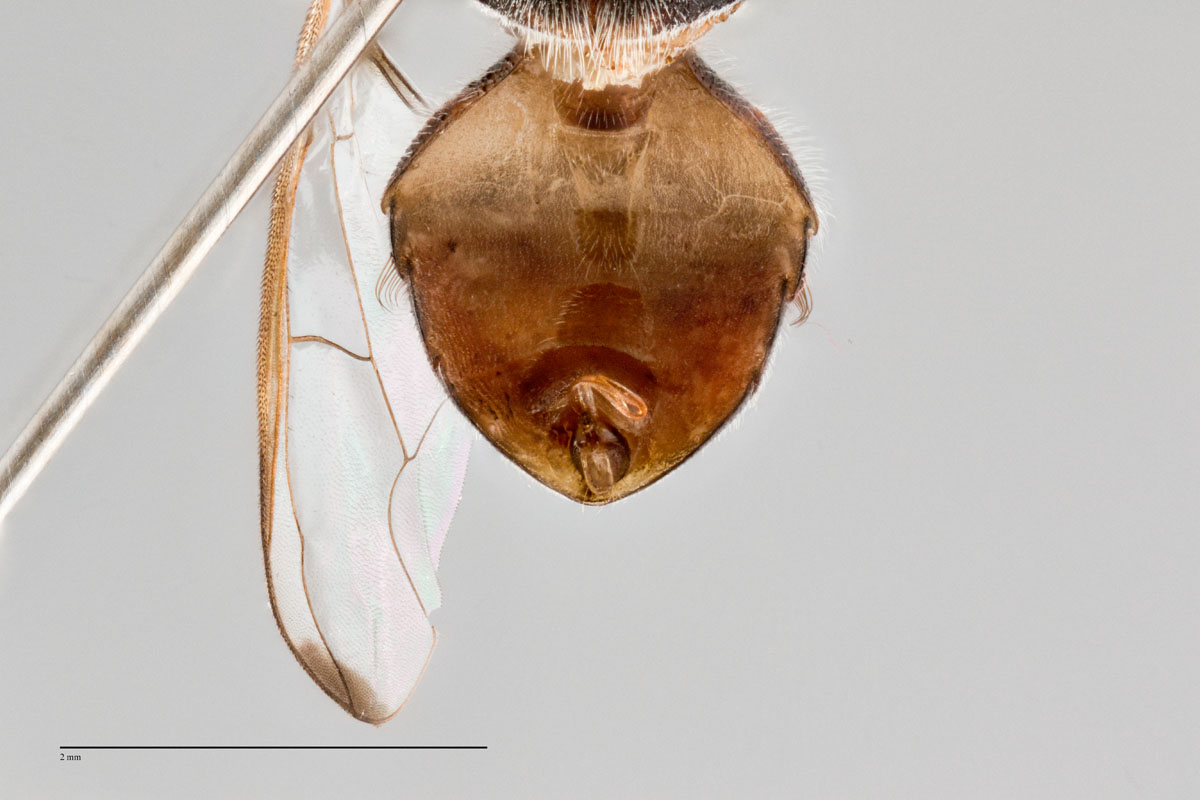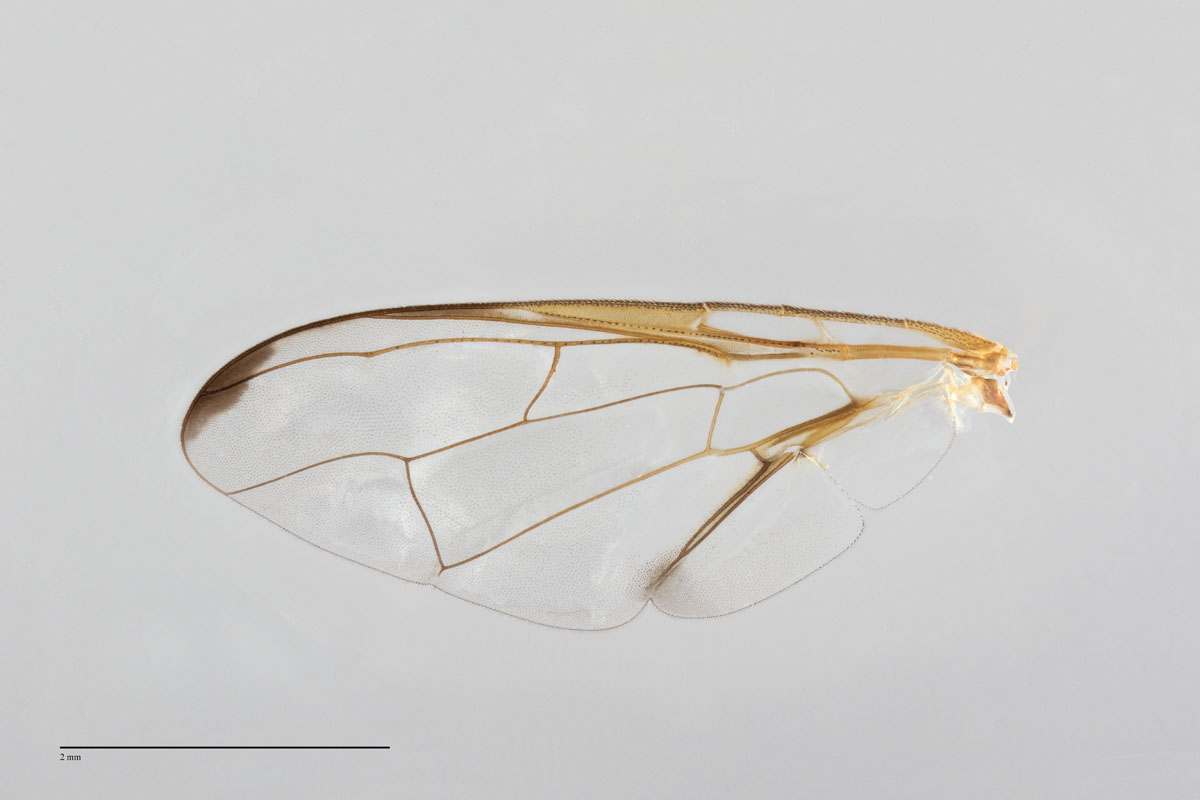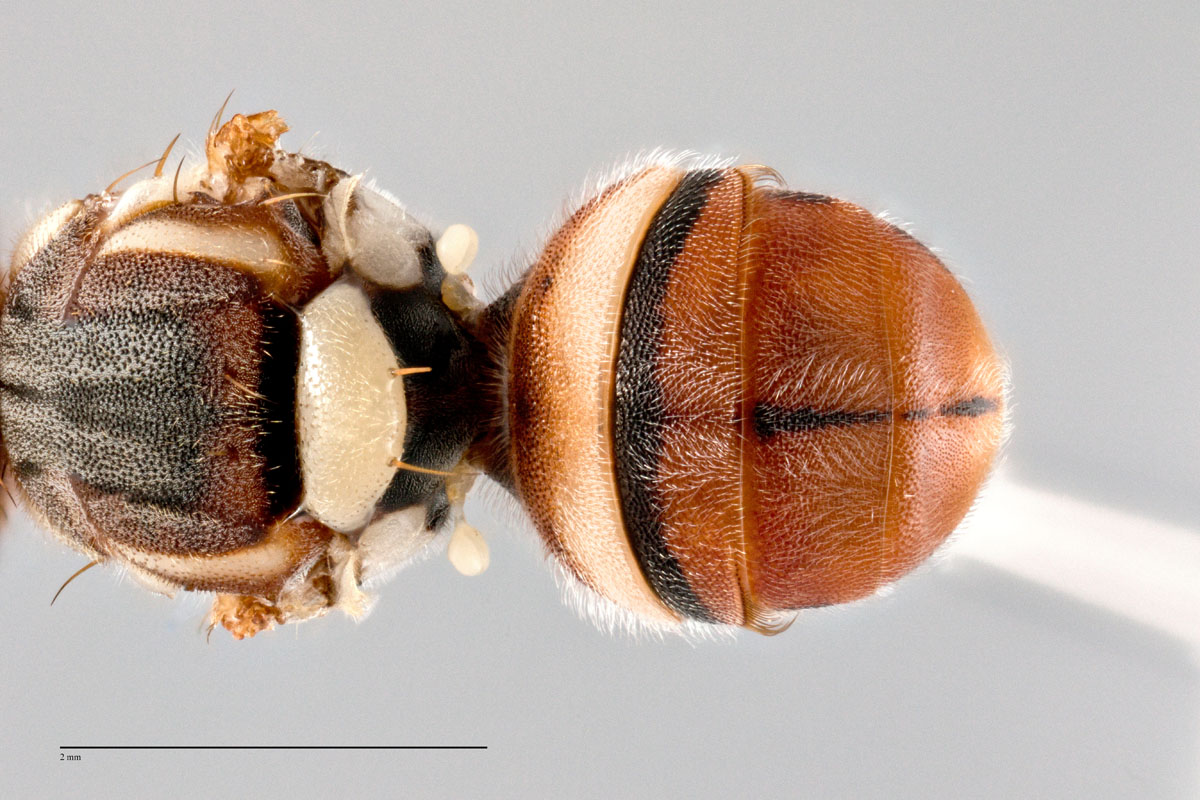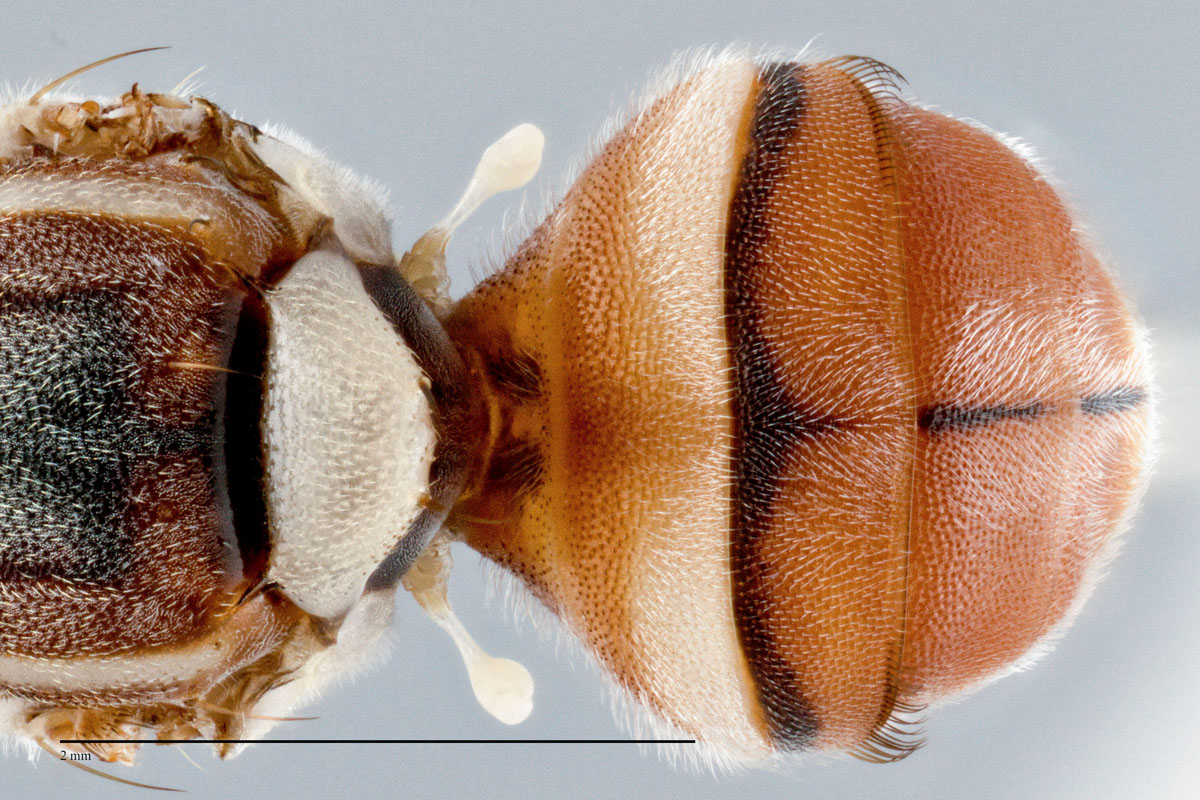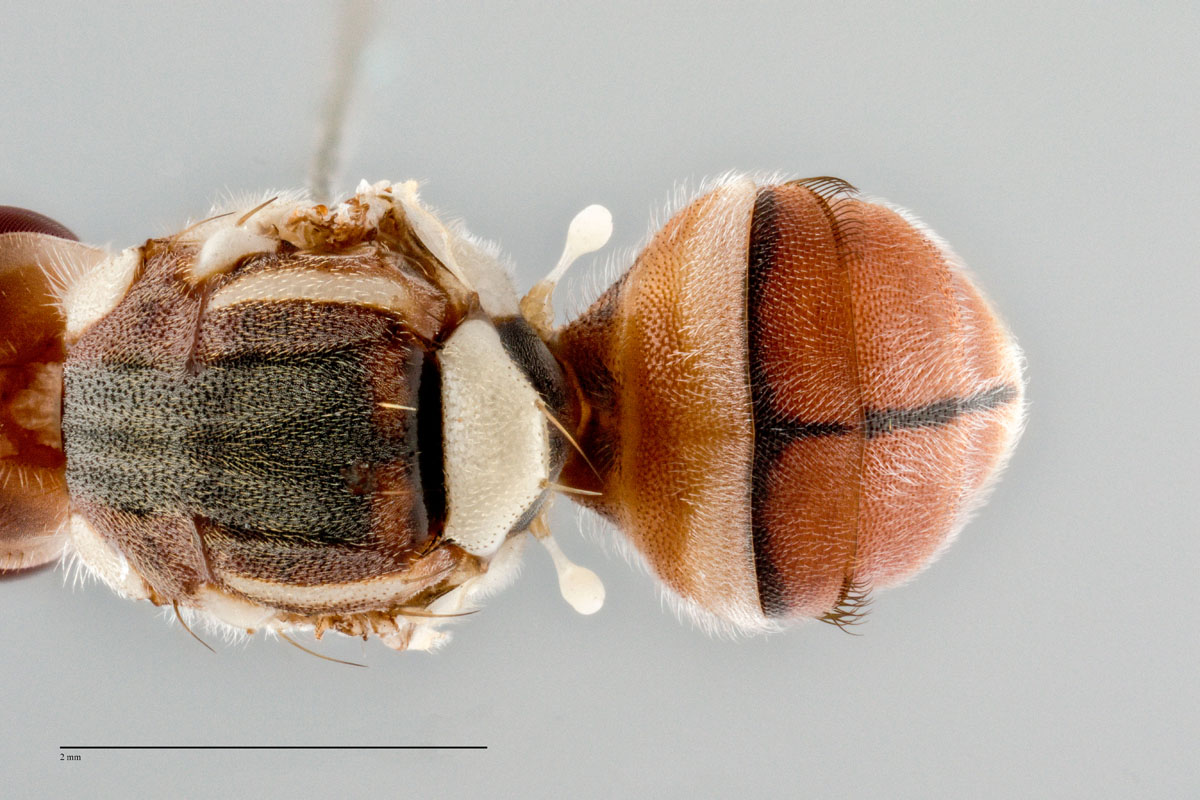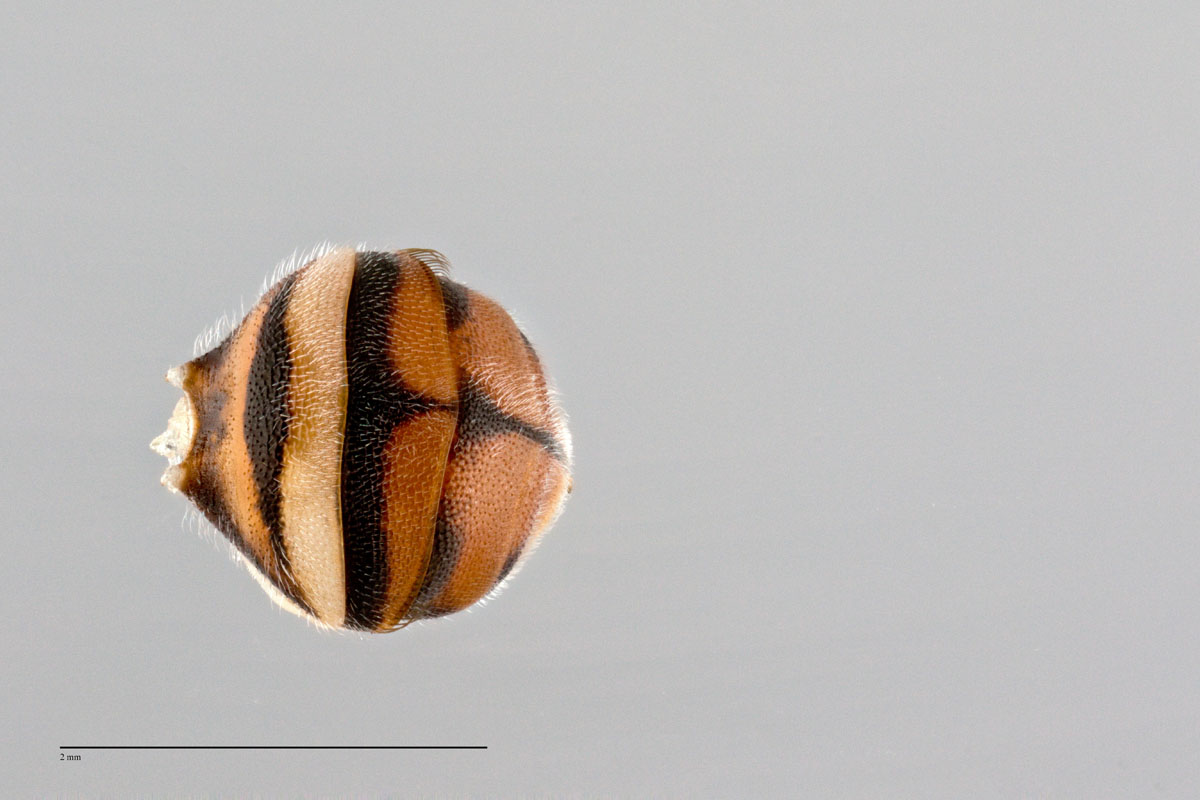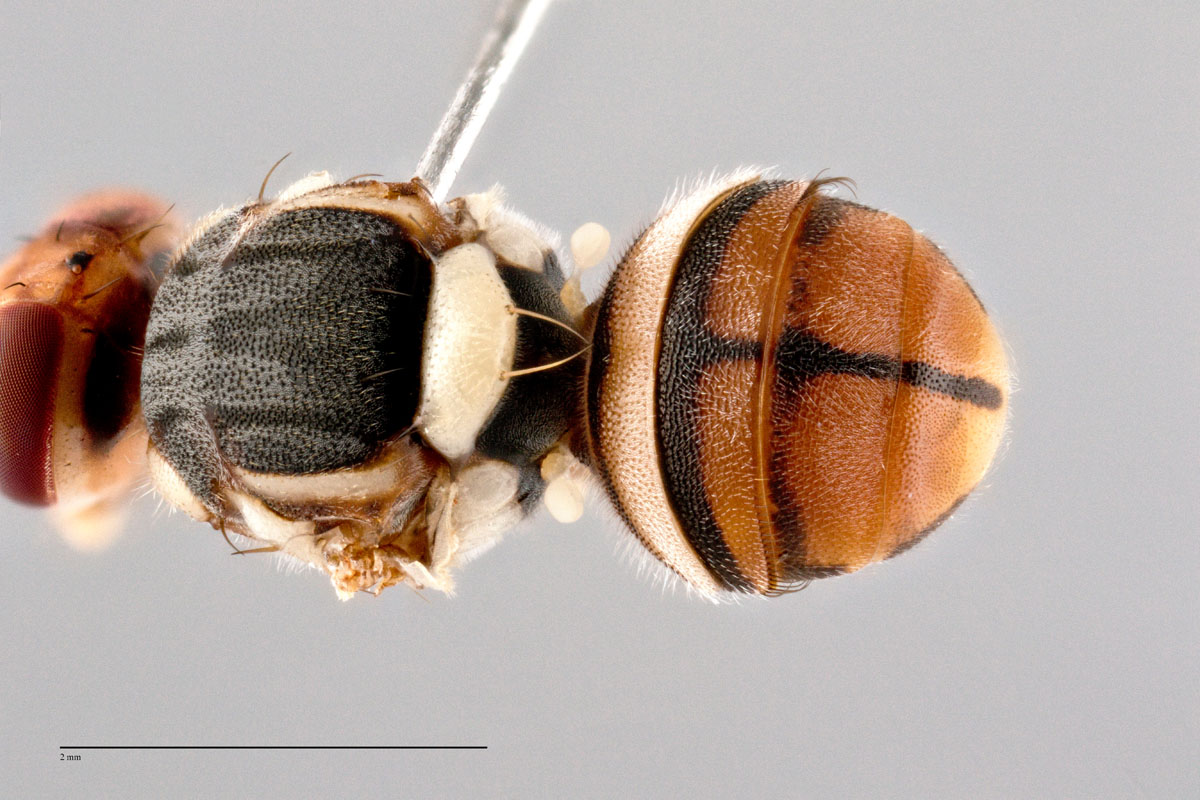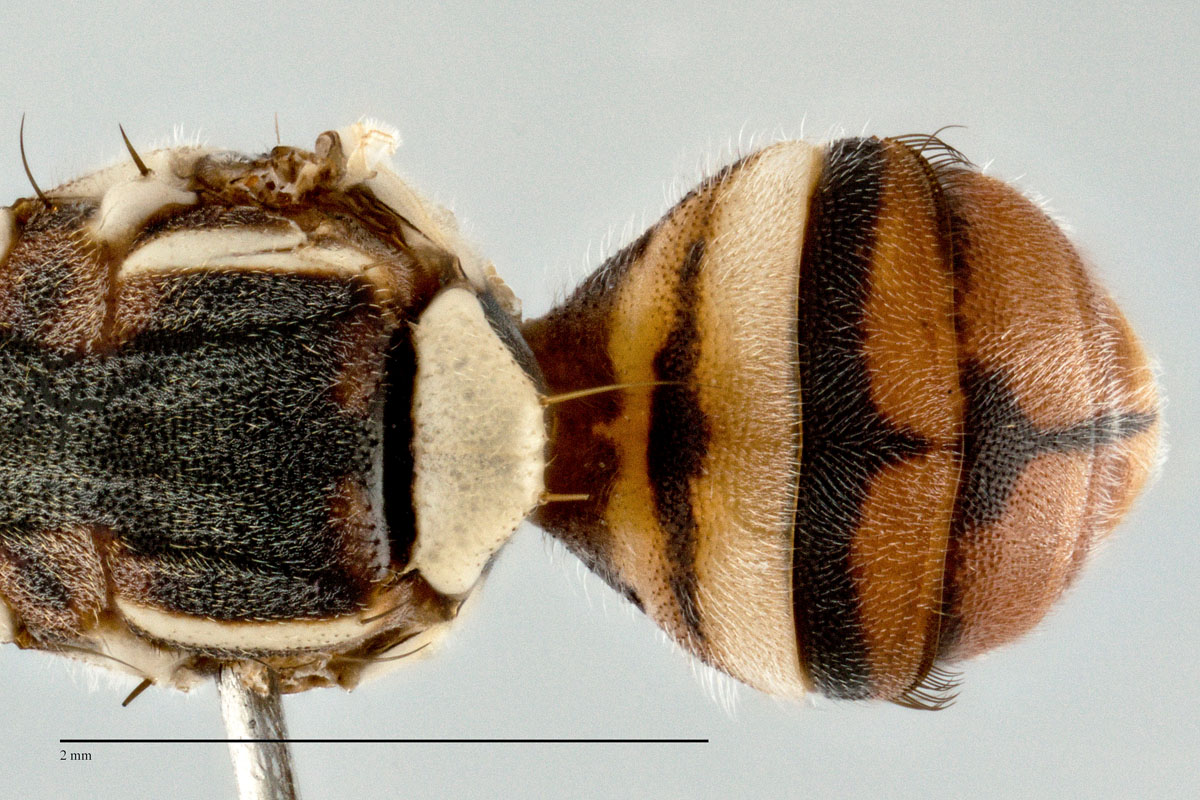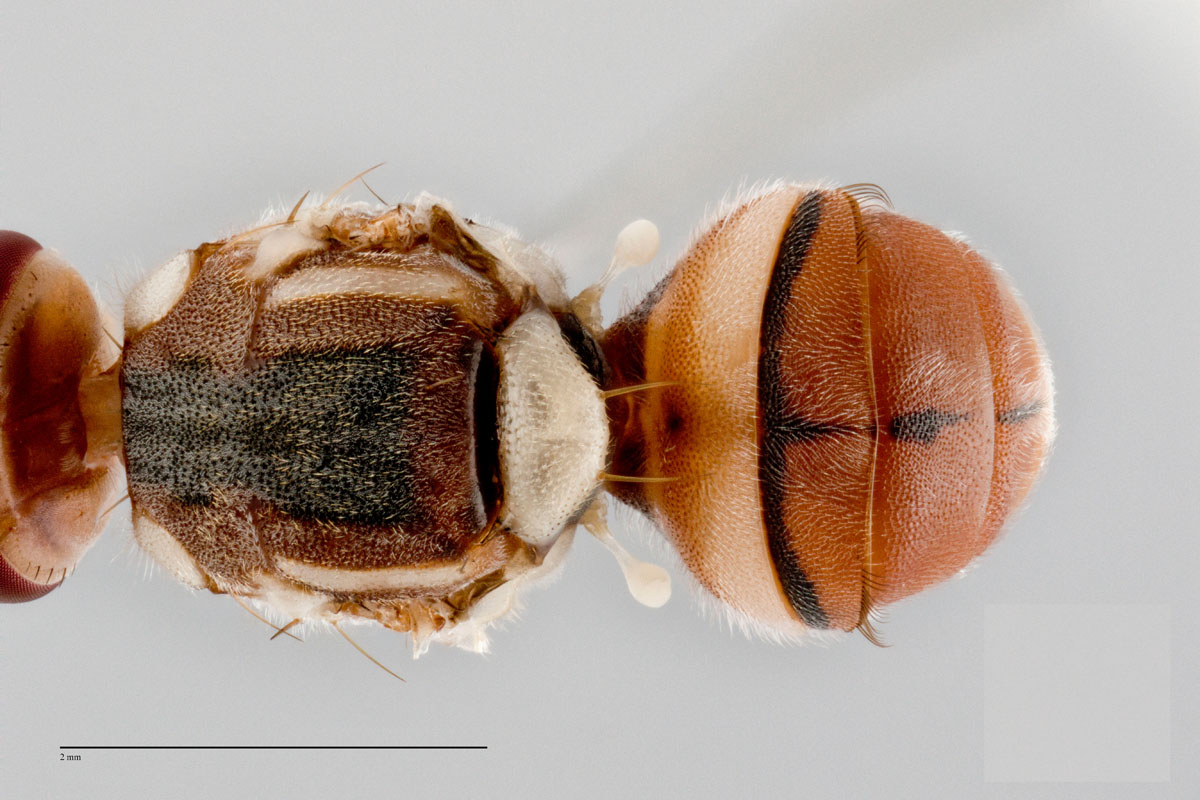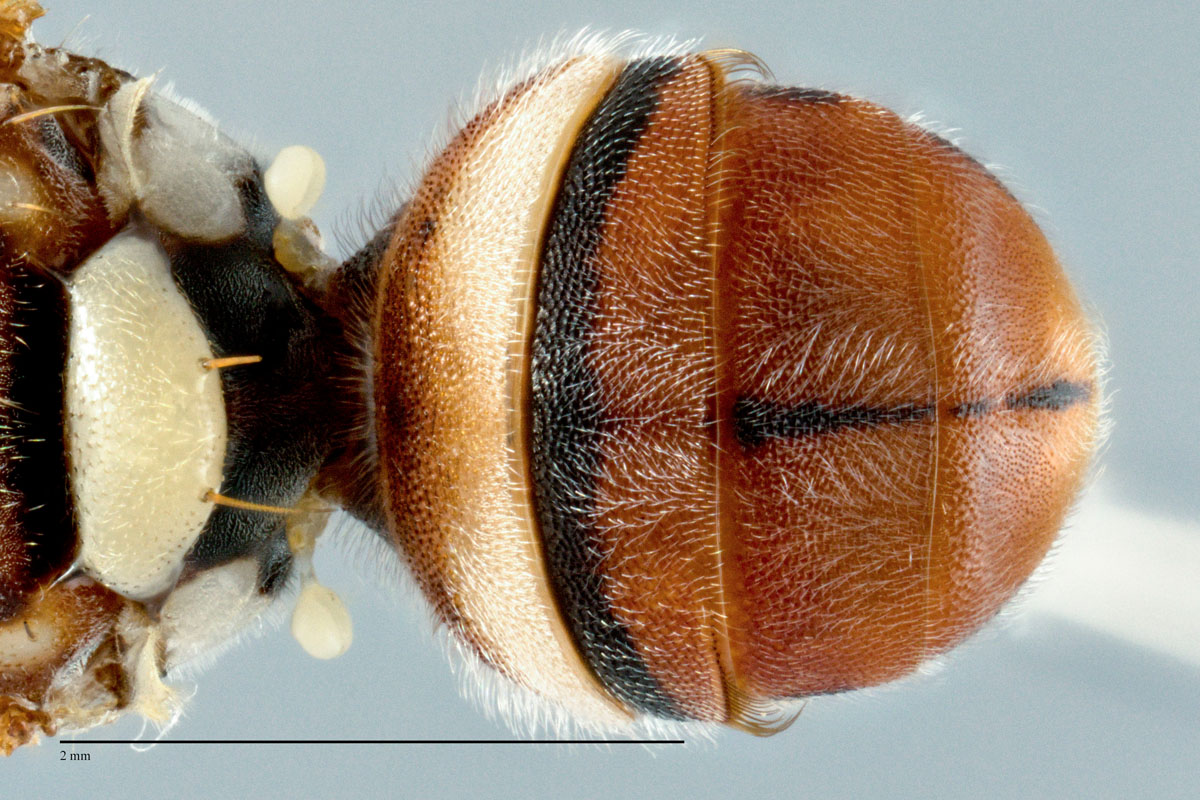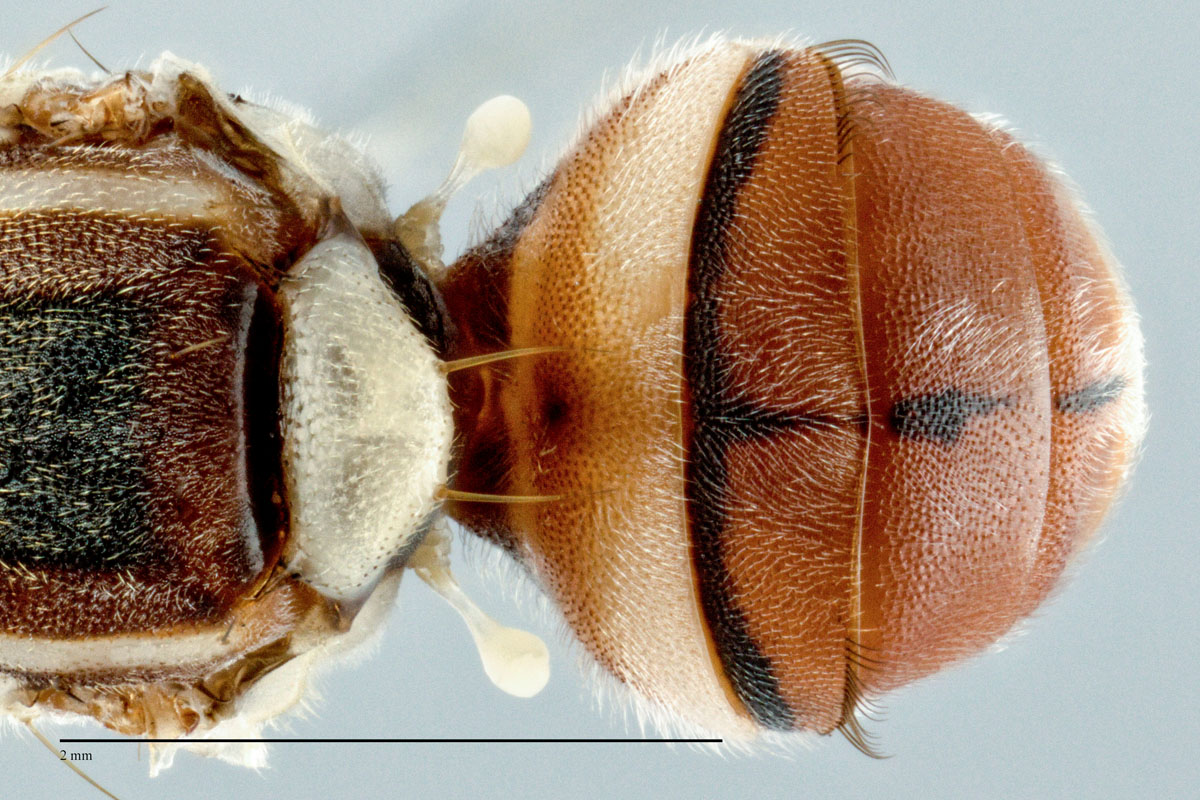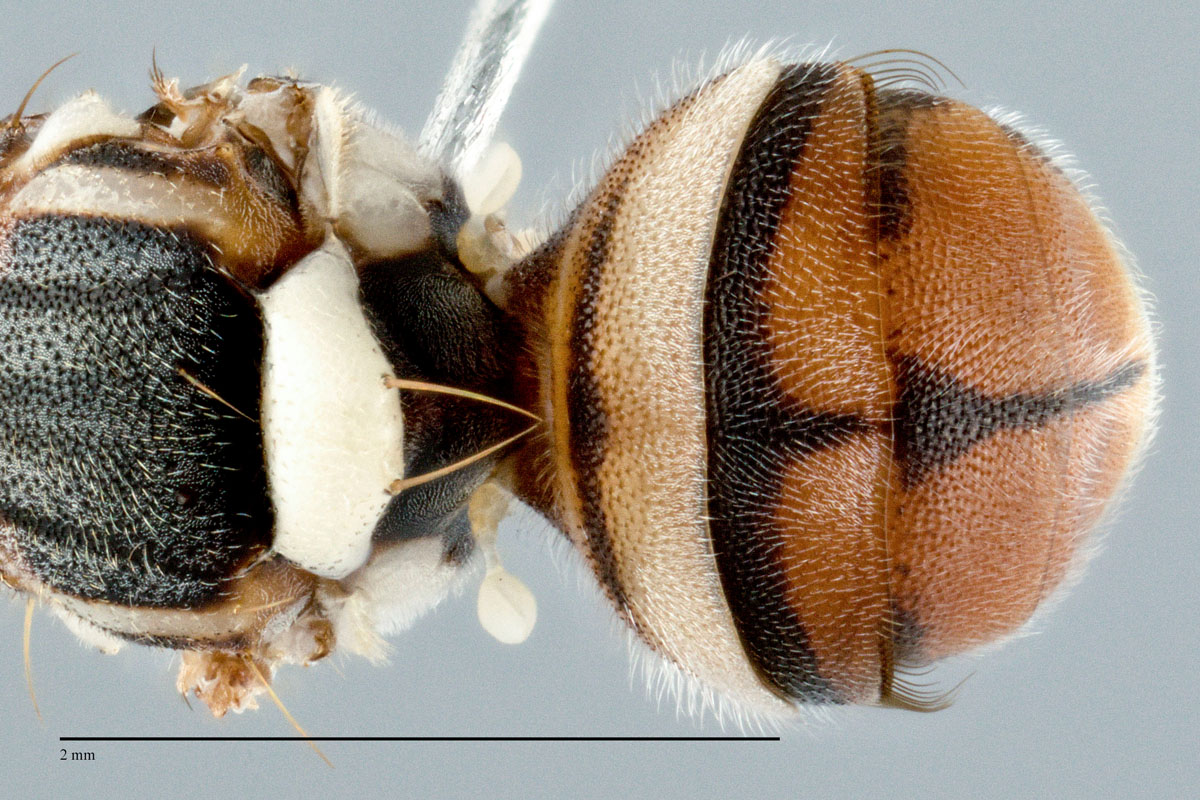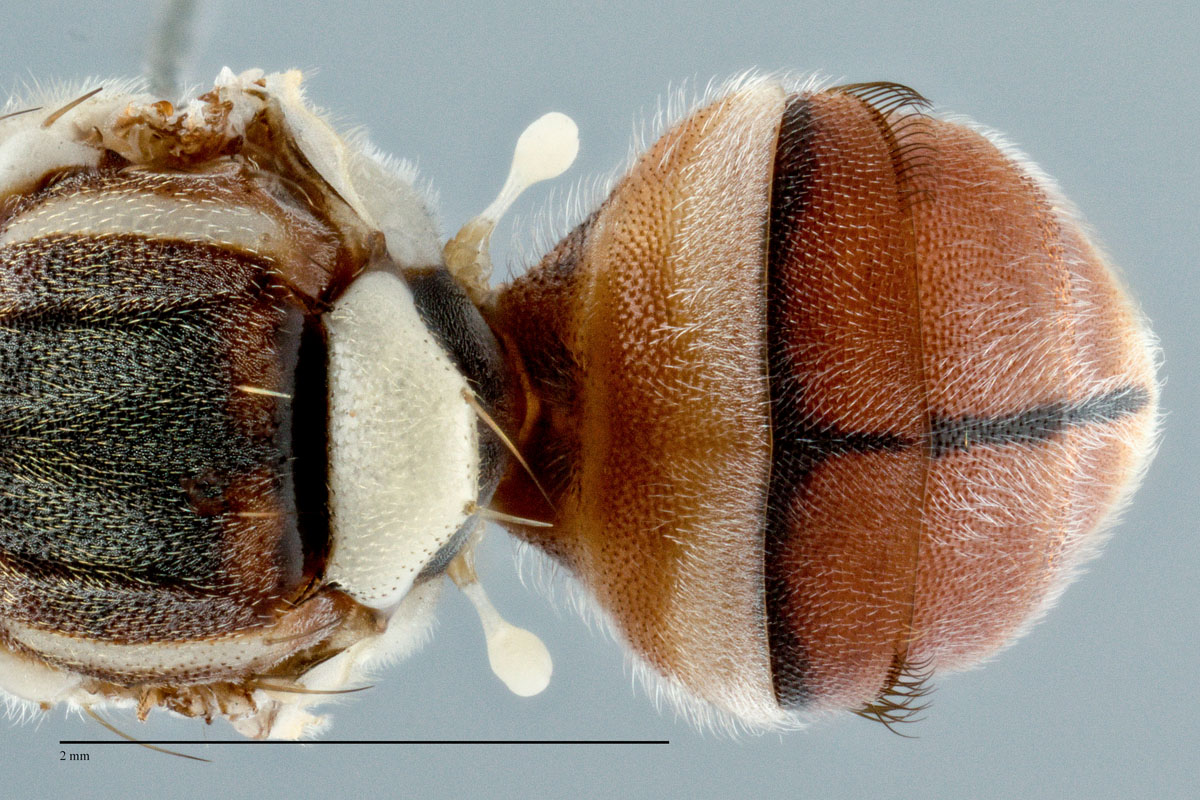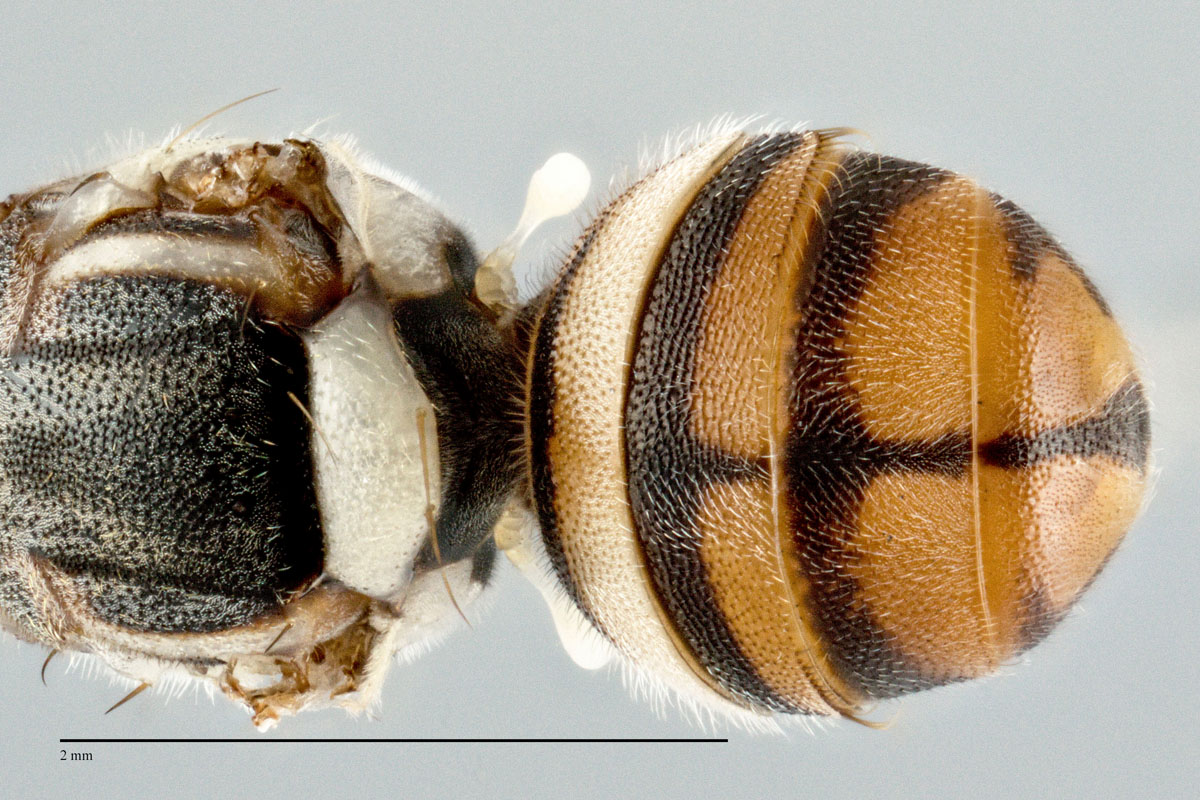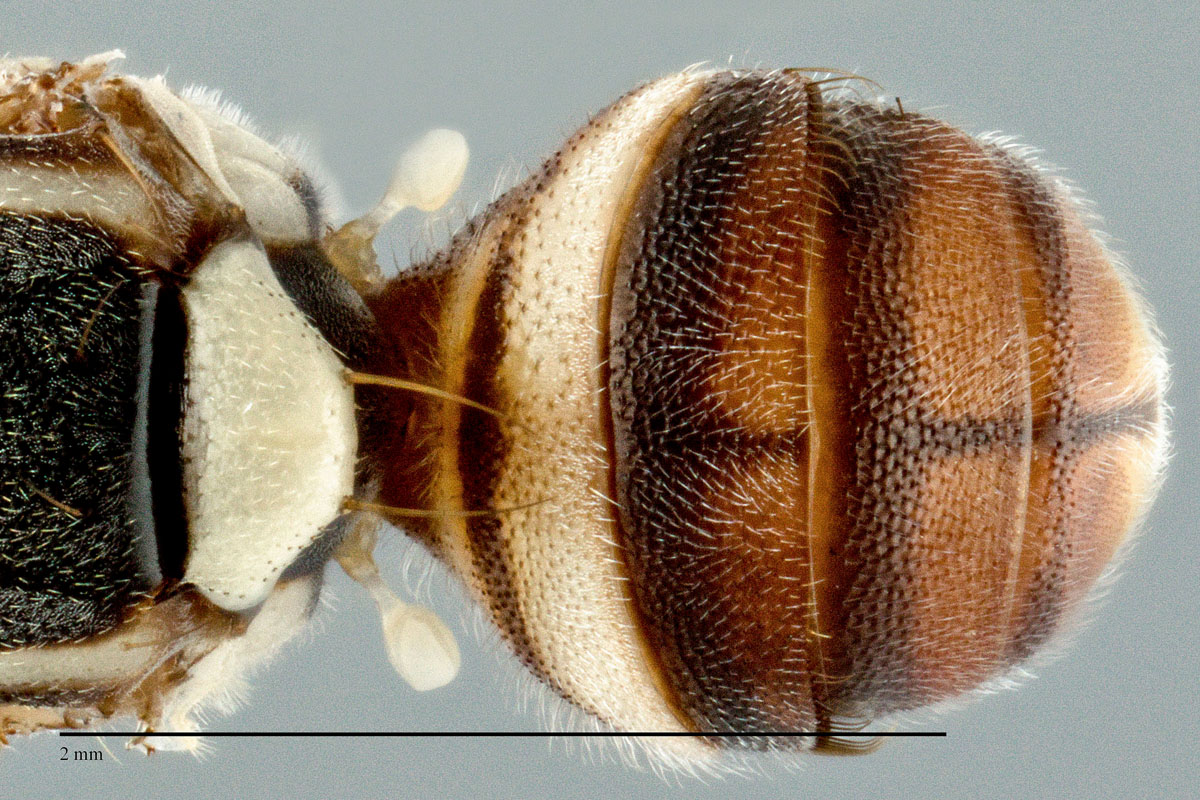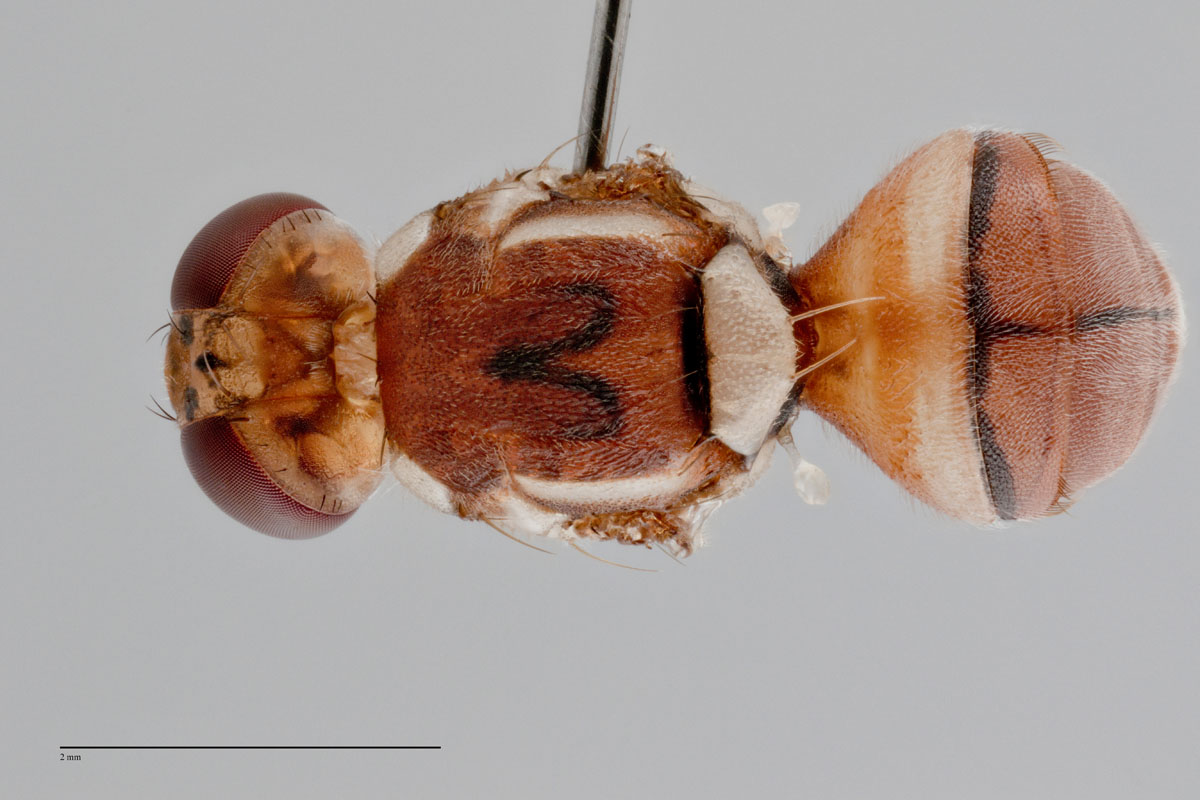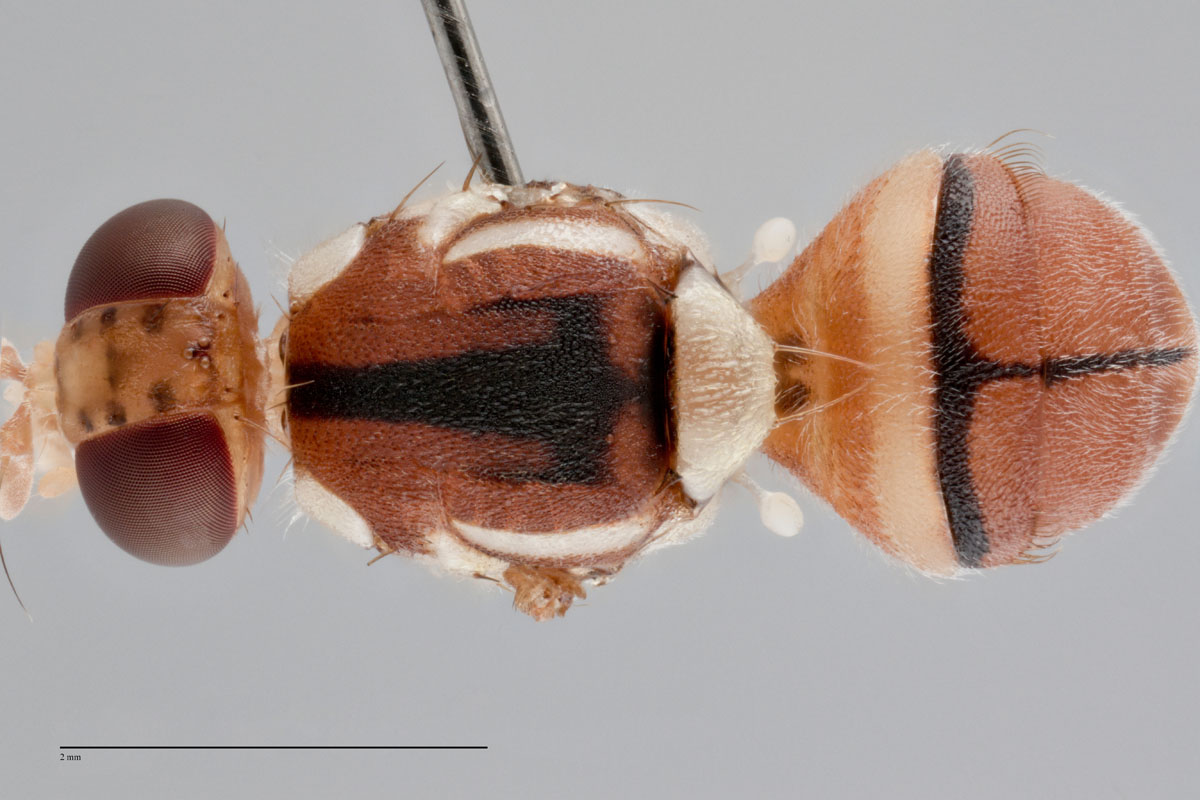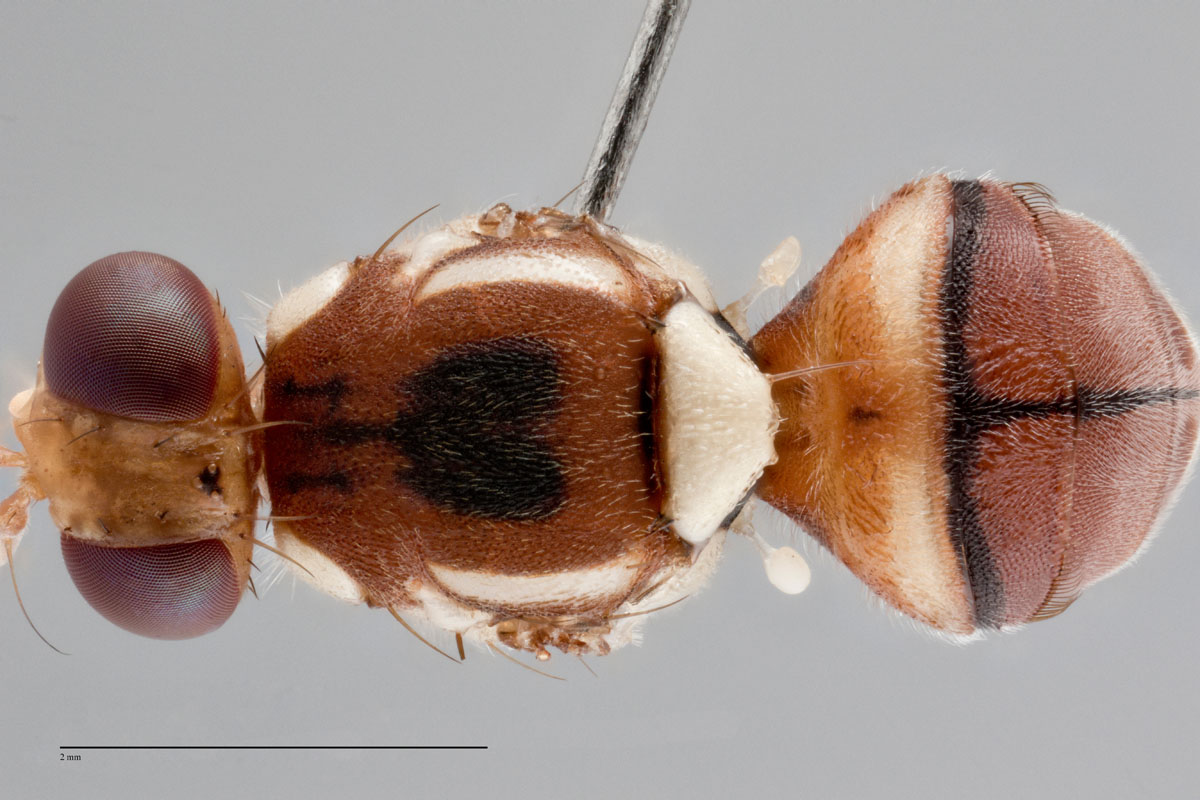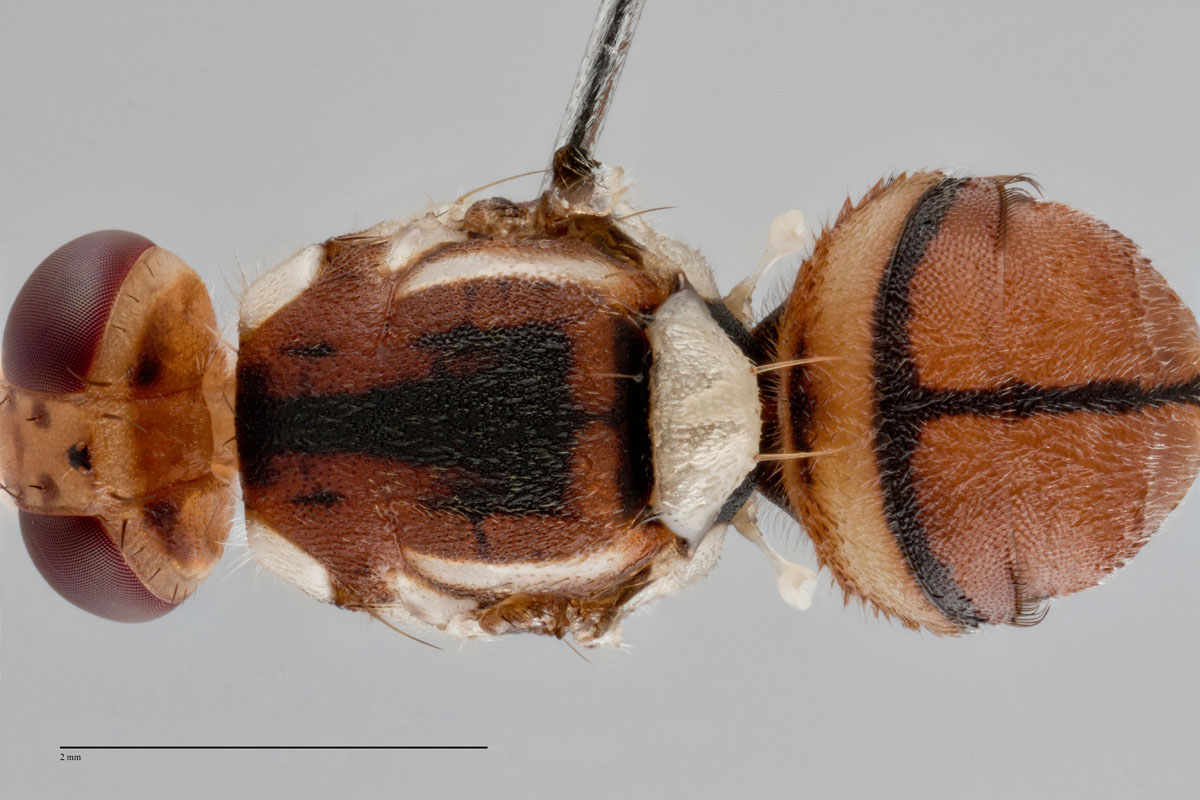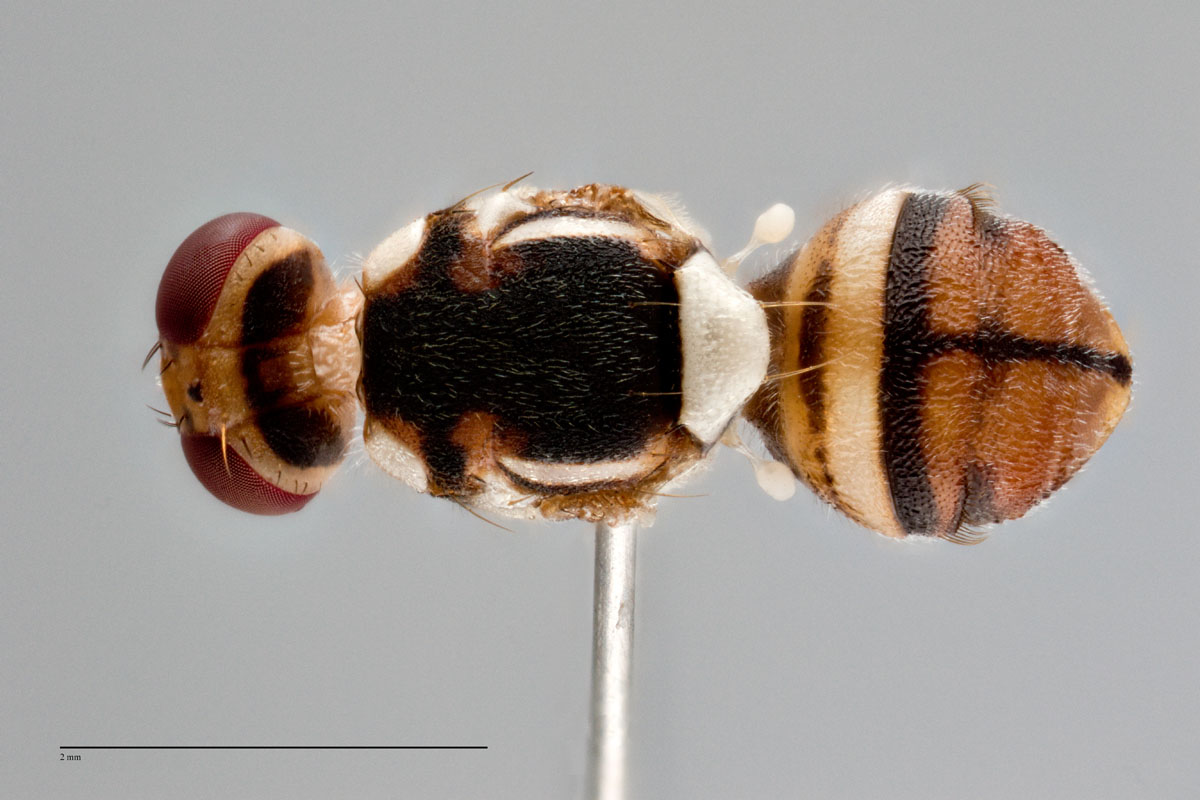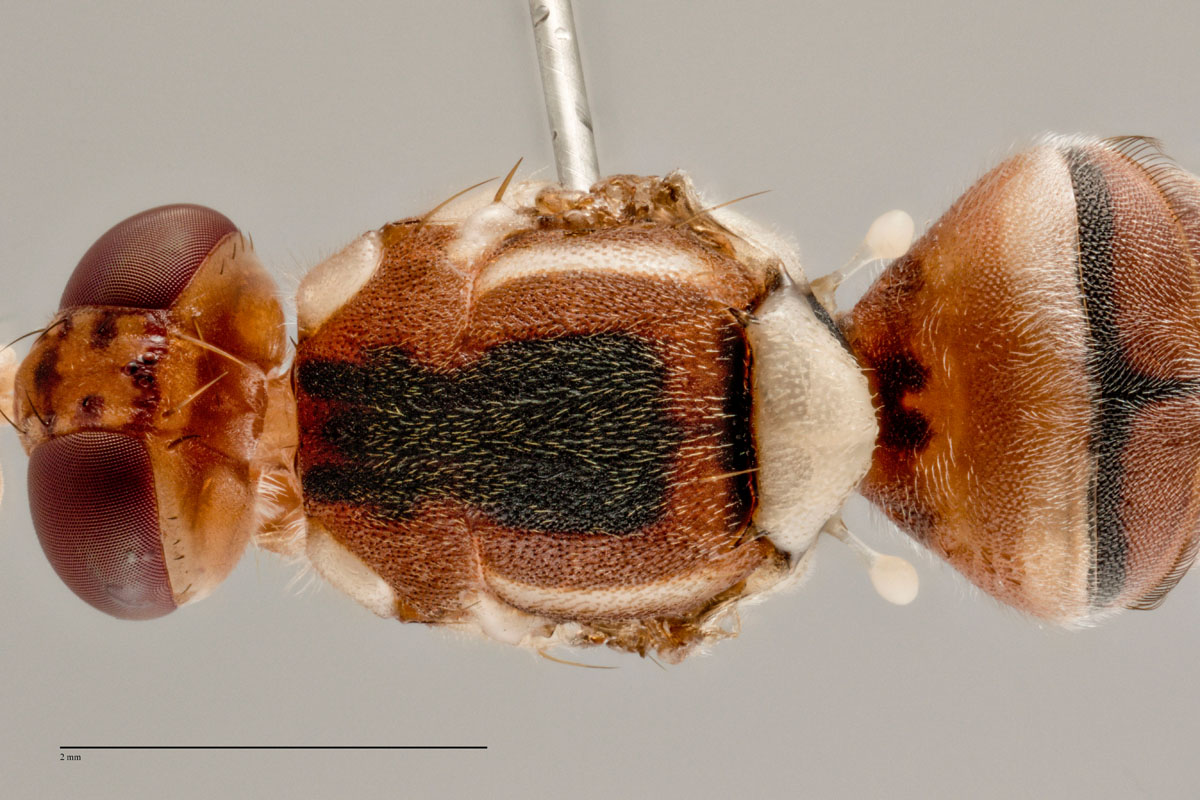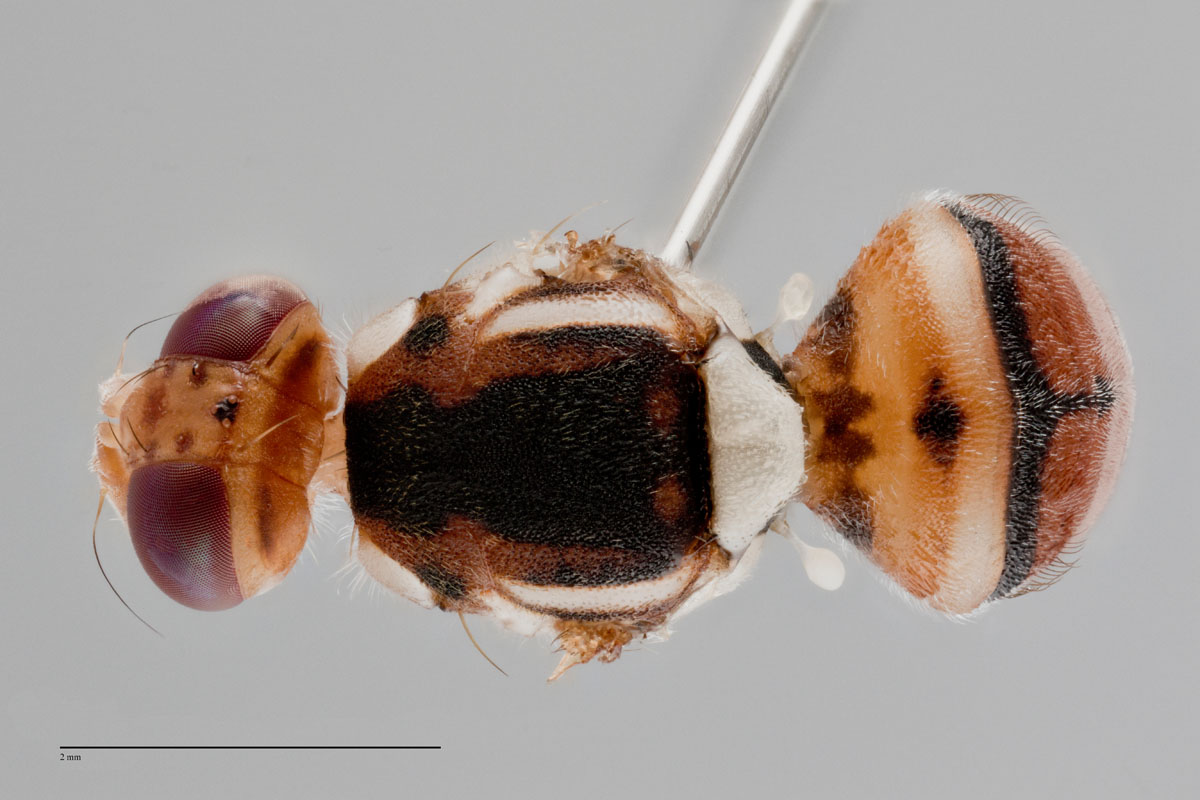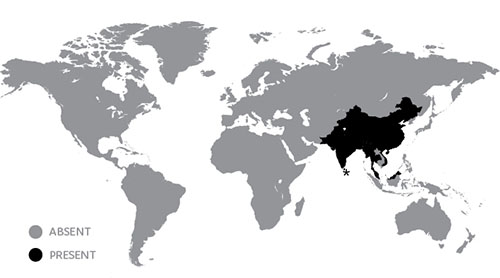Diagnosis
Morphological – adult
Features include:
- face fulvous with a pair of transverse elongate black spots almost meeting in centre
- scutum black with dark red-brown along lateral and posterior margins
- postpronotal lobes and notopleura yellow
- mesopleural stripe reaching almost to anterior npl. seta dorsally
- broad parallel sided lateral postsutural vittae ending behind ia. seta
- medial postsutural vitta absent
- scutellum yellow with narrow black basal band
- legs with all segments entirely fulvous except hind tibiae pale fuscous
- wings with cells bc and c colourless, both cells entirely devoid of microtrichia, a narrow pale fuscous costal band confluent with R2+3 and ending at apex of this vein, a small oval fuscous spot across apex of R4+5, anal streak absent but with a pale fuscous tint within cell cup
- supernumerary lobe of medium development
- abdominal terga III-V red-brown with a ‘T’ pattern consisting of a narrow transverse black band across anterior margin of tergum III and a narrow medial longitudinal black band over all three terga, narrow black anterolateral corners on terga IV and V, a pair of oval red-brown shining spots on tergum V
- posterior lobe of male surstylus short
- female with aculeus tip needle shaped (Drew and Romig 2013).
Morphological – larvae
Information not available.
Molecular
DNA barcoding
Diagnostic BOLD reference data available.
COI data
B. correcta COR004 Classic morphology Folmers COI
B. correcta COR006 Abdomen variation Folmers COI
B. correcta COR010 Abdomen variation Folmers COI
B. correcta COR011 Abdomen variation Folmers COI
B. correcta COR018 Scutum variation Folmers COI
B. correcta COR019 Scutum variation Folmers COI
B. correcta COR021 Scutum variation Folmers COI
B. correcta COR022 Scutum variation Folmers COI
B. correcta COR024 Scutum variation Folmers COI
DDOSTs2 data
B. correcta COR004 Classic morphology DDOSTs2
B. correcta COR010 Abdomen variation DDOSTs2
B. correcta COR019 Scutum variation DDOSTs2</a
B. correcta COR024 Scutum variation DDOSTs2
EIF3L data
B. correcta COR004 Classic specimen EIF3L
B. correcta COR010 Abdomen variation EIF3L
FCOI data
B. correcta COR023 Scutum variation FCOI
POP4 data
B. correcta COR004 Classic morphology POP4
B. correcta COR006 Abdomen variation POP4
B. correcta COR010 Abdomen variation POP4
B. correcta COR019 Scutum variation POP4
B. correcta COR021 Scutum variation POP4
B. correcta COR018 Scutum variation POP4
PCR-RFLP Test 1
BsrI: Data not available
HinfI: Data not available
HhaI: Data not available
Sau3AI: Data not available
SnaBI: Data not available
SspI: Data not available
Vspl: Data not available
PCR-RFLP Test 2
Data not available.
